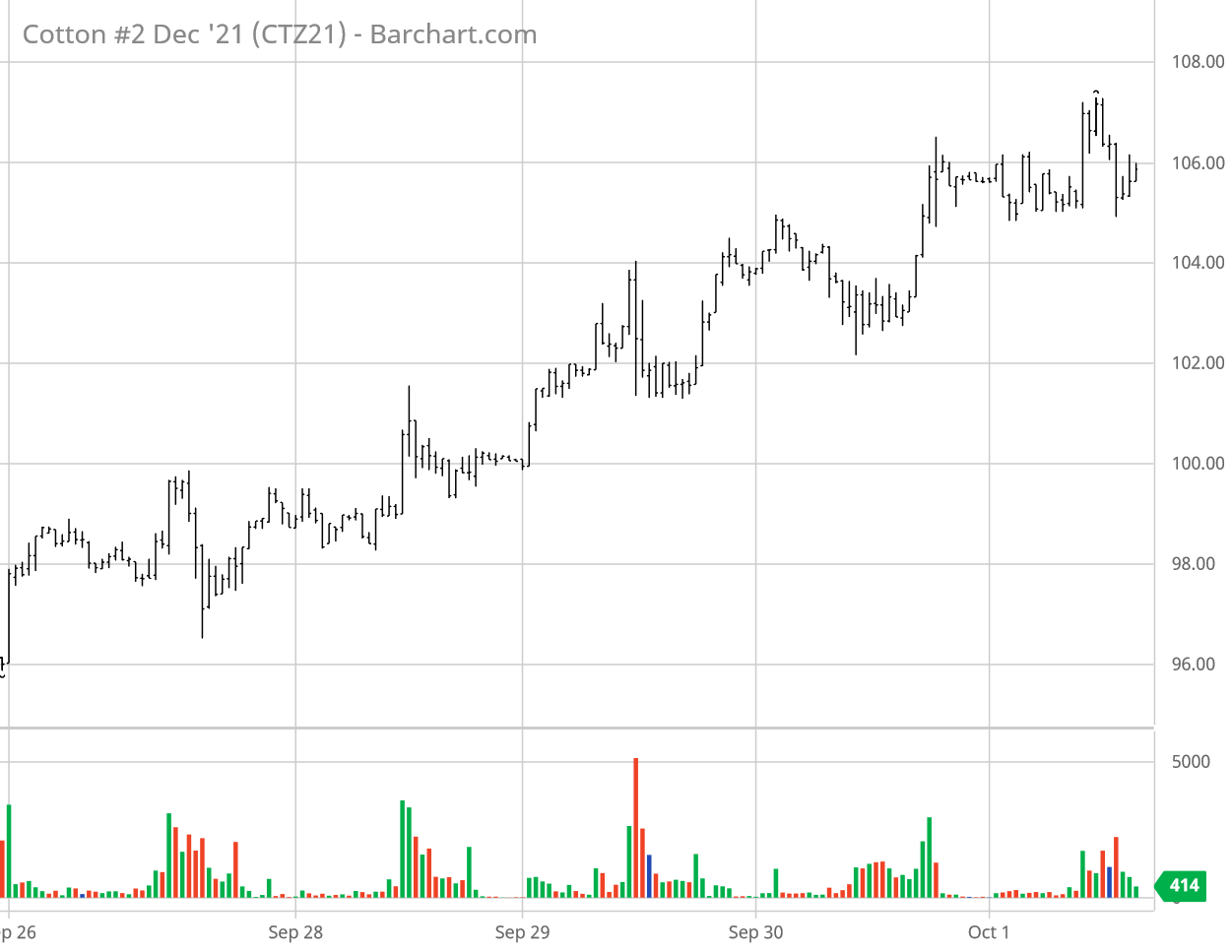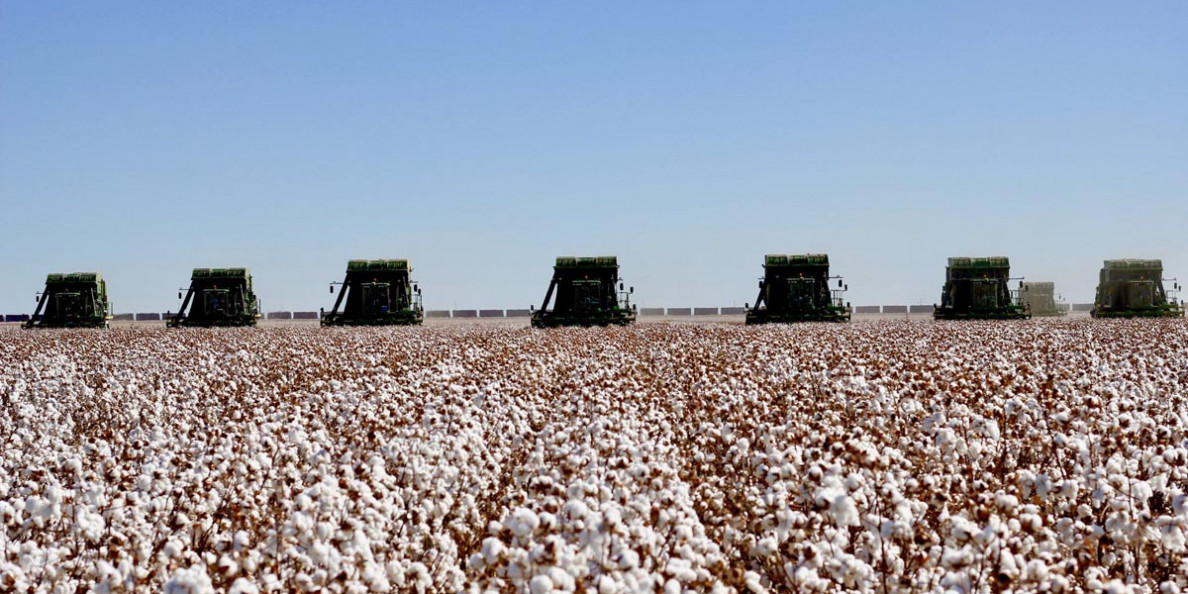For the week ending Friday, October 1, Dec’21 ICE cotton futures marched over fourteen cents higher, smashing through the dollar cotton threshold along the way (see chart above courtesy of Barchart.com). Friday’s settlement was 104.53 cents per pound, down 1.27 cents on the day and almost three cents off the daily high.
The most immediate bullish influence appeared to be speculative long positioning in ICE cotton futures (confirmed here) with steady and large increases in daily open interest. Another indirect but significant looking influence was surging Chinese cotton futures, perhaps reflecting irrational exuberance in that market, with arbitrage linkages to ICE futures. And/or perhaps it reflects a shorter supply of domestic Chinese cotton (and Indian, for that matter).

Cotton-specific fundamental factors this week included season high weekly U.S. cotton export sales, and continuing good U.S. cotton condition ratings. However, the good cotton maturation weather in Texas has been interrupted by widespread and prolonged rain showers. U.S. cotton certified stock levels continued to erode after peaking in late June, which is perhaps more evidence of good export demand.
I would remind readers that to the extent that the current rally is speculative fueled, it could unpredictably and dramatically reverse. Speculative buying can be influenced by animal spirits, risk on/off developments, and other effects that have little to do with ag market fundamentals. I would also point out that this isn’t 2010, the last time we had dollar cotton. Back then there was a global shortage, and the surging cash market pulled the futures market along for the ride. That is not the current situation.
The movement of ICE cotton futures has implications for potential hedging strategies. The price volatility in Q1 and Q2 is a reminder why it is risky to hedge by selling futures — but it’s also made some option premiums more expensive. As new crop Jul’22 cotton futures risen in the last few months, a near-the-money 85 call option has increased in value. Between September 23 and 40, an 85 call option on July’22 rose from 9.45 cents to 17.93 cents per pound. Had it been purchased in the previous months (i.e., back when some new crop was being cash contracted in the mid-80s), the current uptrend clearly illustrates the insurance aspect of call options. In general, a call option represents upside price risk protection, in combination with cash contracting or selling futures. Looking further out, the rising new crop Dec’22 futures contract has resulted in an out-of-the-money 80 cent put option premium declining from fourteen cents in January to 5,67 cents per pound by September 30. If Dec’22 futures keep rising, this and similar put option wills become increasing affordable down-side price insurance. That is, once purchased, it will buffer unexpected declines in Dec’22 futures by increasing in value.
For more details and data on Old Crop and New Crop fundamentals, plus other near term influences, follow these links (or the drop-down menus above) to those sub-pages.
Πηγή: cottonmarketing.tamu.edu

